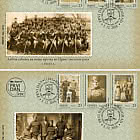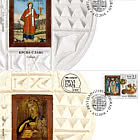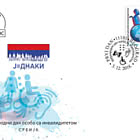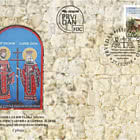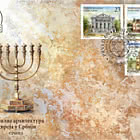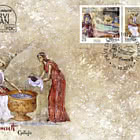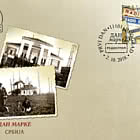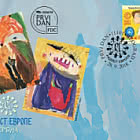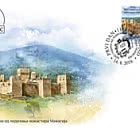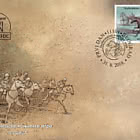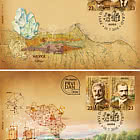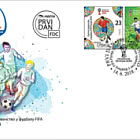2018100 Years Since the End of the Great War - Great Doctors оf the Great War - First Day Cover
2018 100 Years Since the End of the Great War - Great Doctors оf the Great War - First Day Cover for only GBP £1.71
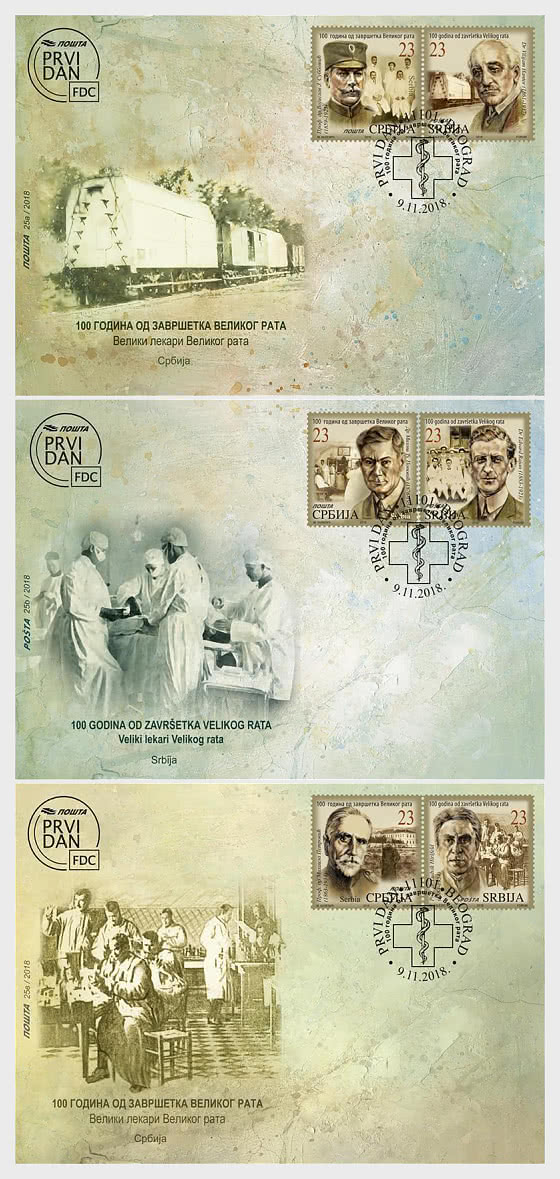
- 09.11.2018
Immense contribution in treating of patients and civilians, development of medical science and practice during the First World War, along with 409 doctors and 203 medical workers of the Serbian ambulance team, gave the foreign medical missions – the English, the French and the Russian one. The Red Cross teams of doctors, as well as individuals – the volunteers, were helping their Serbian colleagues.
The greatest merit for the control of epidemics of three types of typhus, which cut down 58% of the Serbian doctors and medical staff (paramedics, nurses volunteers) had the English mission led by Dr. William Hunter. Without the help of the foreign doctors, the typhus epidemics would have hardly been controlled, and the number of the deceased (about 135,000) would have been greater by far
The names of the Serbian and the foreign doctors who gave their contribution to the work of the Serbian military ambulance during the First World War are still mentioned with the greatest respect.
Professor Dr. Vojislav Ј. Subbotić - (1859–1923)A founder and dean of the Faculty of Medicine in Belgrade, chief of the surgical department ODB in Belgrade, father of the Serbian surgery. He studied medicine in Vienna and Paris. During the First Serbian – Turkish War in 1876, he was a volunteer in the battles on the Drina river. In the Serbian – Bulgarian War as well as in the Balkan Wars, he was a military surgeon in Belgrade. In the First World War he operated the wounded in Belgrade and Niš. After the retreat through Albania, he went to Paris and London where he was a Serbian delegate in the allied commission. At the beginning of 1918 he left for the Salonika front and worked at the First Field Surgical Hospital in Dragomanci.
He constructed femoral brace in 1916, and his method of reparation of blood vessels injuries was used until the end of the Korean War (1954). He recieved the most important awards, medals and recognitions. He was the president of the Serbian Medical Society.
Dr. William Hunter - (1861–1937)A commander of the English military mission in Serbia during the three typhus epidemics in 1915, he suggested measures which prevented the spreading of the epidemics. As of 16 March all suggested measures were undertaken throughout Serbia, both in military and among citizens. On 25 March, a movable railway disinfector was set in Kragujevac, and on 6 April the same was done in Niš; in the meantime, on 2 April, the first English ambulance train for vaccinations was formed.
With the railway traffic interruption and abolition of military leaves, depediculation was initiated with the help of the Serbian barrel. The result of all those activities was a radical turnover in the battle against typhus and pediculosis, so that the epidemic was supressed as early as 17 May. The work of Hunter’s mission showed what the effect of the preventive measures was when they were applied on the entire endangered territory.
Dr. Miloš Đ. Popović - (1876–1954)He graduated from the Faculty of Medicine in Vienna in 1901. In 1904 he founded the first military dentist station at the General Military Hospital in Belgrade, and the other one in 1909 at Moravska Permanent Military Hospital in Niš. He is the author of the first books on dentistry in Serbian language.
He founded the Sobriety Society in 1901, the Union of the Sober Youth in 1907, the Union of Scouts and Women Mountaineers in 1911 and the Society of Doctors and Abstainers in 1911, as well. In Voden, at the Salonika front, on 1 January 1917 at the Reconvalescent Ward he founded a dentist station which evolved into a dentist clinic. After the war, in 1919, he established the State Ward for Children’s Protection at the Ministry of Social Policy.
Dr. Edward Ryan - (1883–1923)Dr. Edward Ryan, chief of the American Red Cross mission in Serbia, arrived in Belgrade in September 1914. In March 1915, Dr. Ryan organized a mission to fight against the typhus epidemic in Belgrade. During this epidemic Dr. Ryan came down with a difficult form of typhus fever. Dr. Ryan and his staff performed over 8,000 surgeries and coordinated the Red Cross help programme for thousands of Serbian refugees, scattered across the entire country. He died on 18 September 1923, having succumbed to malignant malaria.
For the merits rendered to the Serbian people during the Great War he was decorated with the French medal of the Knight of the Legion of Honour and the Serbian medal of the White Eagle.
Professor Dr. Mihailo Mika Petrović - (1863–1934)A founder of the surgical ward of the Military Hospital in Niš and a surgeon consultant at the First Field Hospital in Dragomanci at the Salonika front, where he stood out as a restless war surgeon. In the Balkan Wars and the First World War, Petrović became an outstanding surgeon. He introduced many innovations into the war surgical doctrine, and one of them is the treatment of war wounds by all the principles of asepsis and antisepsis. He was a professor of surgery at the Faculty of Medicine in Belgrade and the president of the Serbian Medical Society.
After his death, his heart was built in the wall of the surgical hall of the Main Military Hospital in Belgrade. On his urn the following was written: My soul to God, my body to earth, and my heart to surgery. He is a holder of 17 decorations and medals, among which is the Medal of the French War Cross with a Palm.
Professor Dr. Ludwik Hirszfeld - (1884–1954)Dr. Ludwik Hirszfeld came to Serbia in February 1915 and at his own request he was sent to Valjevo where he organized systematic disinfection and depediculation of the entire town, thanks to which the typhus epidemic began to wane. After the retreat through Albania, he worked at the Salonika front as a leading bacteriologist of the Serbian army. He isolated the causitive agent of paratyphus C, now called Salmonella hirszfeldi. With a pentavalent vaccine, which he produced in 1917, the first to be vaccinated was voivoda Mišić, then members of the headquarters, officers and over 110,000 of combatants.
At the Serbian hospital of Prince Regent Alexander, in 1918, he organized the first bacteriological course for the ambulance officers and medical staff. After the breakthrough of the Salonika front, Dr. Ludwik Hirszfeld was appointed as a chief of the bacteriological ward of the Military Hospital in Belgrade. He was decorated with the Order of Saint Sava, third class and the Order of the white Eagle with swords.
Artistic realization of the stamps: MA Marina Kalezić, academic painter.
Expert collaboration: Dr. Zoran Vacić, Serbian Medical Society.
WOPA+ recommended stamp issues
| Music Giants VII - Iron Maiden |
| Issued: 12.01.2023 |
| ›Great Britain |
| Effigy of H.S.H Prince Albert II - Green Letter Rate |
| Issued: 03.01.2023 |
| ›Monaco |
| Year of the Rabbit |
| Issued: 05.01.2023 |
| ›Guernsey |
| Dimitrie Cantemir, 350th Anniversary of his Birth |
| Issued: 16.01.2023 |
| ›Romania |
| Medicinal Plants |
| Issued: 03.01.2023 |
| ›Romania |
| Honour Guard of the President of the Slovak Republic |
| Issued: 02.01.2023 |
| ›Slovakia |
| Veteran Tractors |
| Issued: 04.01.2023 |
| ›Aland Islands |
| St. Elizabeth’s Church in Parnu |
| Issued: 06.01.2023 |
| ›Estonia |













